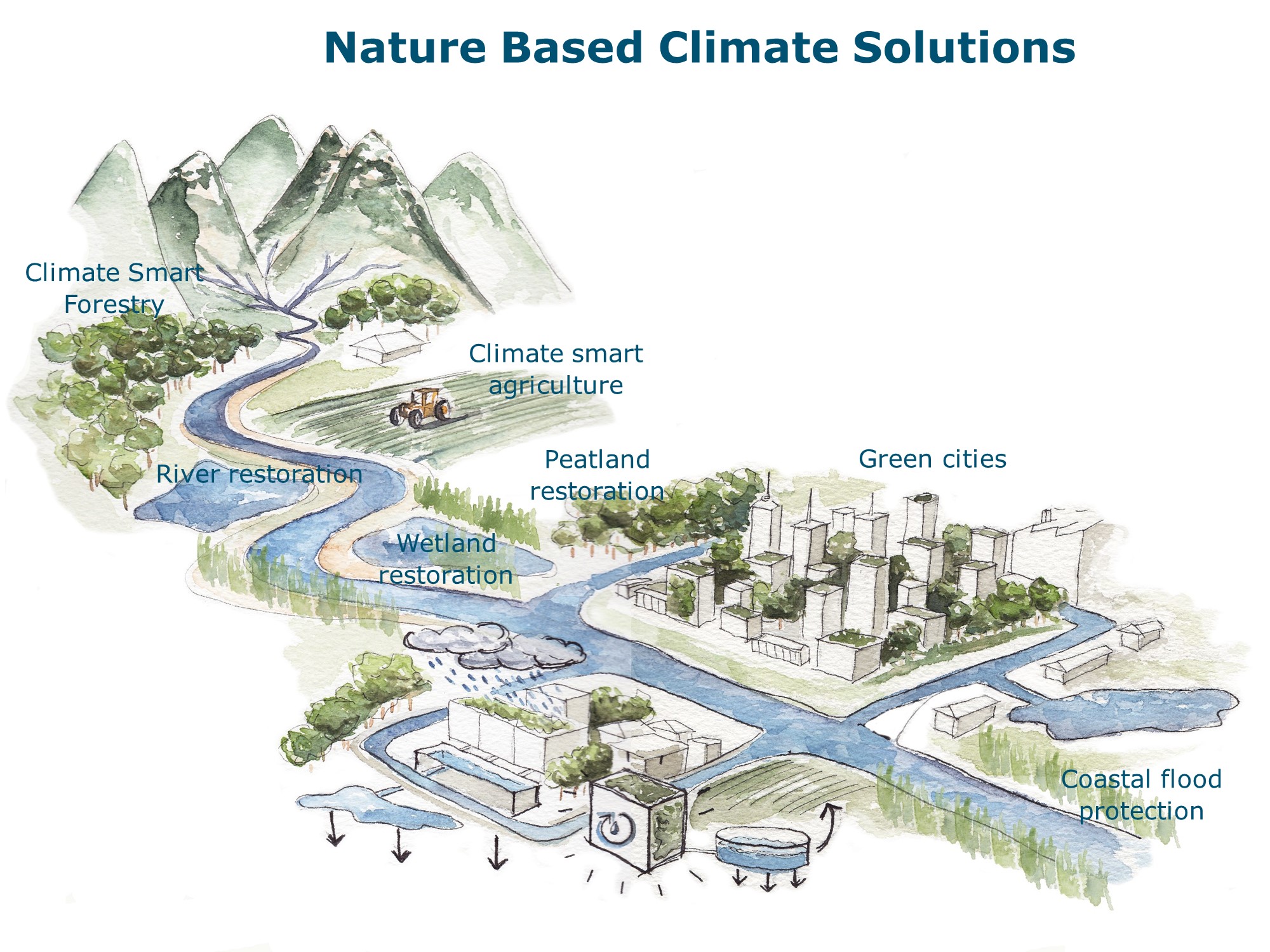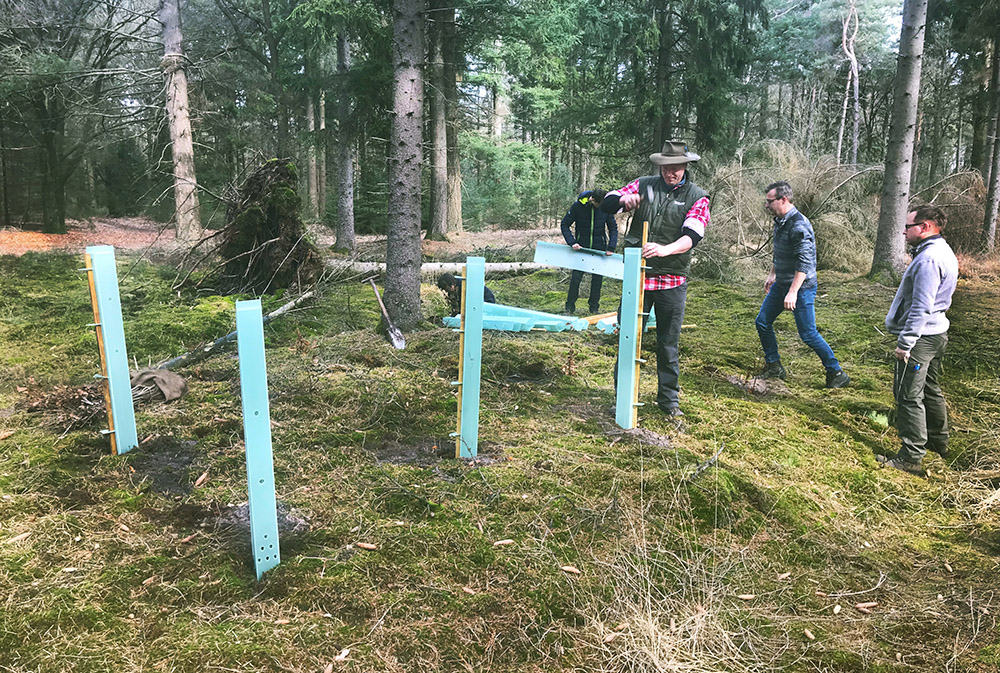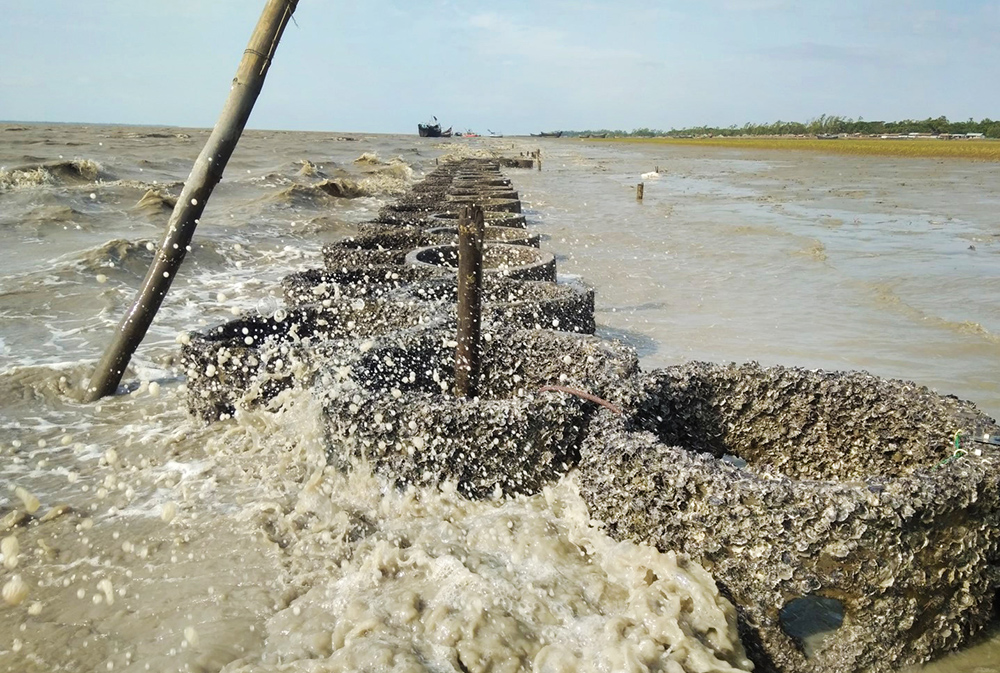
Longread
Nature as the inspiration for climate solutions
Technological solutions alone will not provide long-term answers to climate change and environmental problems. If we want to be climate-proof in the future, we need to draw on the power of nature. Nature-Based Solutions are a new focal point in the global effort to deal with climate change. They fit perfectly with the ambitions of Wageningen University & Research.
| Author: Hanny Roskamp
We need to move towards a combination of technological solutions and Nature-Based Solutions
Fantastic news, says Tim van Hattum, the Climate programme manager at WUR, about the action plan for Nature-Based Solutions that was launched at the Climate Action Summit 2019 in New York on 23 September. The action plan, with China and New Zealand in the lead, emphasizes sustainable forestry, climate-proof agriculture and food systems, the recovery of life in rivers, lakes and oceans, and more opportunities for all people to come into contact with nature.
“The key message is that this new theme in international climate policy will ensure attention is paid to Nature-Based Solutions,” says Van Hattum. “That’s incredibly important because, up to now, there was too little interest at the highest levels in harnessing the power of nature to solve our environmental problems. People looked to technology for answers, for example in the energy transition. That is urgently needed too, but it is not enough if we are to achieve our climate targets.”

Tim van Hattum is collaborating with colleagues on a vision for Nature-Based Solutions for the Netherlands. The vision shows how a densely populated country like the Netherlands could develop over the next 100 years if it embraced solutions inspired by nature on a grand scale. “We would then have more forests, climate-proof and nature-inclusive farming, large tracts of peat marshes and wetlands full of nature, space for rivers and streams, and much greener cities with green roofs and large parklands functioning as green lungs. Vast numbers of people live in the major cities, which together account for two per cent of the Earth’s surface. That’s very efficient, provided that those cities are green, pleasant to live in and climate-proof — and you can achieve that with Nature-Based Solutions.”
According to Van Hattum, Nature-Based Solutions have huge potential in helping restrict global warming to under two degrees and in helping us adapt to a warmer planet. Van Hattum: “These solutions deserve a higher priority.”
Inspired by nature
Nature-Based Solutions are multifunctional solutions. They not only help sequester CO2 but also improve the resilience of an area, increase biodiversity, ensure sustainable food supplies and generate healthier, greener living environments for people. An example is the large-scale planting of trees, as in the reforestation campaign in Ethiopia that recently made the news. Planting trees on a large scale is one of the most effective and cheapest ways to reduce greenhouse gas emissions. But trees also have a positive impact on soil quality and biodiversity.

To give another example, this time in water management: you can protect land by building high dykes — a technological solution — or you can give rivers more room and restore the surrounding wetlands, which reduces the risk of floods. Van Hattum: “We need to move towards a combination of technological solutions and Nature-Based Solutions.”
Becoming more resilient
At present, the debate on how to tackle climate change is still centred on mitigation: measures to reduce greenhouse gas emissions. But Van Hattum argues that adaptation — measures to adapt to the consequences of climate change — is just as important. “We are already struggling with the effects of climate change and we need to make our systems more resilient so that they can cope better with heat, droughts, heavy rainfall, flooding and so forth. What is more, we need solutions that combine adaptation and mitigation because the pressure on space across the world is huge. We need every square metre we can get. From a mitigation perspective, you want to set up solar farms but we also need to produce food and store water, and we want nature too. That’s why we need to look for smart combinations.”

Read the article from the online magazine Wageningen Climate Solutions:
Cities need green measures that significantly improve the quality of life in urban areas and make use of smart technology for water management
Investing in knowledge is crucial
Focusing on Nature-Based Solutions will allow more effective utilization of the Earth’s surface area, given that such natural solutions can provide an answer for multiple climate problems. However, more information is needed first on the effectiveness, costs and benefits, and management of such solutions. That is why investing in knowledge is crucial, says Van Hattum. “We need to investigate how effective Nature-Based Solutions are in the context of a specific region, because you can’t simply copy a solution from one area to the next. WUR could play a pioneering role here, as Nature-Based Solutions are already a key research field for us.”

WUR could play a pioneering role, as Nature-Based Solutions are already a key research field for us
WUR has a great deal of expertise in ecosystems, biodiversity, water, soil and climate change, for instance. Van Hattum: “We study the impact of climate change on agriculture. We have hydrological expertise, on the interaction between water and vegetation. We know how to restore the soil’s natural ability to act as a sponge. What is more, we also study the social aspects of Nature-Based Solutions. How do you create broad support when there are multiple stakeholders, such as farmers, local residents and nature management organizations — how do you get the different groups on board? There are lots of different aspects that you need to tackle and understand if Nature-Based Solutions are to be a success.”
Oyster reefs
WUR has developed pilot projects with various partners for Nature-Based Solutions that could be applied in practice. One such example is a project in which oyster reefs were created in Bangladesh. The reefs protect the coast from flooding and sand erosion. They also attract fish and crabs, helping boost food supplies and biodiversity. What is more, the oyster reefs grow two centimetres a year, which means they can keep pace with rising sea levels. WUR had previously acquired experience with such oyster reefs off the coast of the Netherlands, where they also do an excellent job.
Read the article from the online magazine Wageningen Climate Solutions:
Over the next 10 years, we need to work on defences for vulnerable coastal zones. Now nature can take over the indefatigable work of humans and machines.
Climate-resilient forestry
Reforestation is a hot topic where Wageningen has a great deal to offer. Gert-Jan Nabuurs at Wageningen Environmental Research, for example, is an expert on climate-resilient forestry. The professor of European Forest Resources investigates how we can design and manage forests so as to maximize the amount of CO2 that is sequestered. Options might be the rejuvenation of parts of a forest that are taking up less CO2 or the introduction of more climate-robust species.
Wetland restoration
A lot of work is done within WUR on the soil and the possibilities for using natural solutions to improve soil quality. Van Hattum: “We can improve soil fertility by increasing the proportion of organic material such as compost. And that also lets the soil absorb more moisture and store more CO2.”
WUR is investigating how we could restore peatland areas. About three per cent of the Earth’s surface consists of peat marshes. They are being drained on a large scale for agriculture, which causes CO2 and methane to be released into the atmosphere, exacerbating the climate problem. It also leads to soil subsidence. WUR is examining the options for making peatlands wetter again, with room for nature and new earning models such as wetland crop cultivation.

Sand engine
Then there are the projects where the construction process is left to nature itself (Building with Nature). For example, a ‘sand engine’ has been created in the Netherlands that steers the flow of the North Sea in such a way that the tides bring in sand, generating a huge expansion in the area of land and consequently protecting the coast. All that without needing a single truck to transport the sand.
Huge potential
Nature-Based Solutions have a lot of potential for a global roll-out, thinks Van Hattum. “The fantastic examples we already have should be applied on a wide scale. But that can only happen if governments around the world take action. WUR has demonstrated that Nature-Based Solutions work and have many benefits. Now governments need to be made aware of that. This is why it’s such good news that the UN Climate Action Summit is putting this on world leaders’ agenda.”